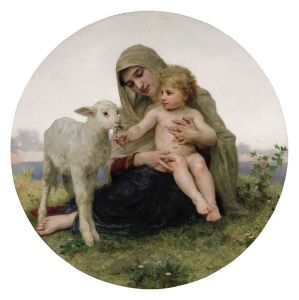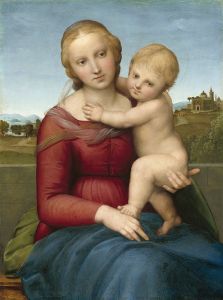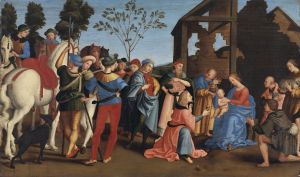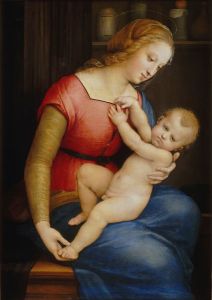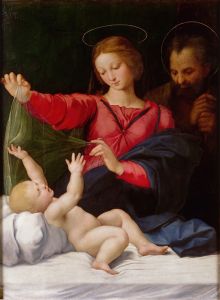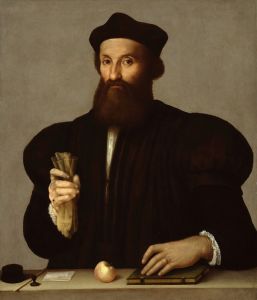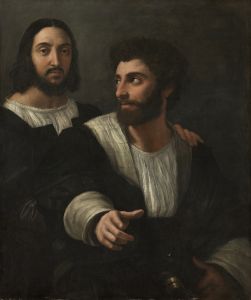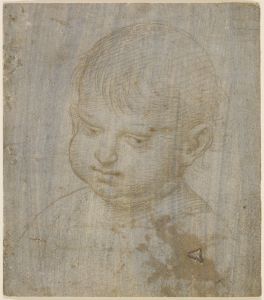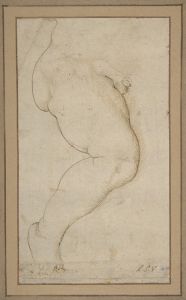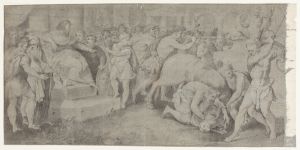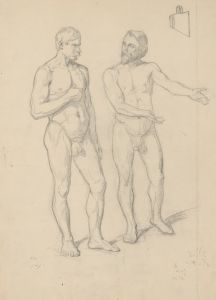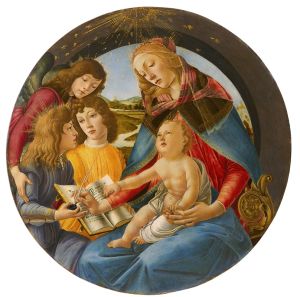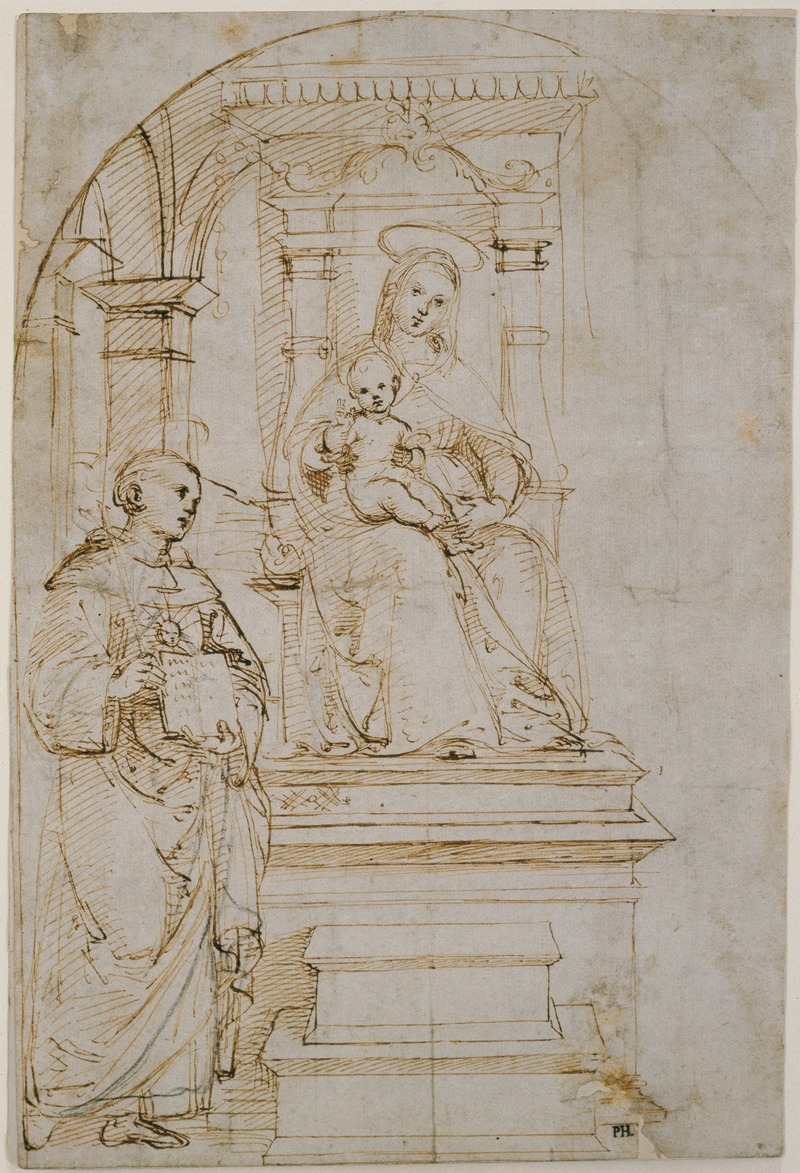
Sketch for an enthroned Virgin and Child with Saint Nicholas of Tolentino
A hand-painted replica of Raphael’s masterpiece Sketch for an enthroned Virgin and Child with Saint Nicholas of Tolentino, meticulously crafted by professional artists to capture the true essence of the original. Each piece is created with museum-quality canvas and rare mineral pigments, carefully painted by experienced artists with delicate brushstrokes and rich, layered colors to perfectly recreate the texture of the original artwork. Unlike machine-printed reproductions, this hand-painted version brings the painting to life, infused with the artist’s emotions and skill in every stroke. Whether for personal collection or home decoration, it instantly elevates the artistic atmosphere of any space.
Raphael, an Italian painter and architect of the High Renaissance, is renowned for his contributions to art, particularly in the realm of religious compositions. One of his lesser-known works is the "Sketch for an Enthroned Virgin and Child with Saint Nicholas of Tolentino." This artwork is a preparatory drawing, which provides insight into Raphael's creative process and his approach to composition and religious iconography.
The sketch depicts the Virgin Mary seated on a throne, holding the Christ Child, with Saint Nicholas of Tolentino standing nearby. Saint Nicholas of Tolentino was an Augustinian friar and a popular saint in Italy, known for his piety and miracles. His inclusion in the sketch suggests that the final painting was likely intended for a religious setting, possibly commissioned by an Augustinian order or a patron with a particular devotion to the saint.
Raphael's sketches are highly valued for their demonstration of his technical skill and his ability to convey emotion and narrative through simple lines and forms. In this sketch, Raphael employs a delicate yet confident line to outline the figures, capturing the serene expression of the Virgin and the gentle interaction between her and the Christ Child. The presence of Saint Nicholas is marked by his traditional Augustinian habit, and his posture suggests a sense of reverence and devotion.
The composition of the sketch reflects Raphael's mastery of spatial arrangement and balance. The figures are arranged in a pyramidal structure, a common compositional technique used during the Renaissance to create a sense of harmony and stability. This arrangement not only draws the viewer's eye towards the central figures of the Virgin and Child but also establishes a connection between them and Saint Nicholas, emphasizing the spiritual significance of the scene.
Raphael's ability to convey depth and volume through shading and line work is evident in this sketch. The subtle use of chiaroscuro, or the contrast between light and dark, adds a three-dimensional quality to the figures, enhancing their realism and presence. This technique, which Raphael refined throughout his career, is one of the hallmarks of his style and contributes to the lifelike quality of his compositions.
While the final painting that this sketch was intended for may not have survived or been identified, the sketch itself remains a valuable piece of art history. It offers a glimpse into Raphael's artistic process and his approach to religious themes, which were central to his oeuvre. The sketch is also a testament to Raphael's enduring influence on the art world, as it exemplifies the principles of beauty, harmony, and clarity that define the High Renaissance.
In summary, the "Sketch for an Enthroned Virgin and Child with Saint Nicholas of Tolentino" by Raphael is a significant work that highlights the artist's skill in composition, line work, and religious iconography. Although it is a preparatory drawing, it stands as an important artifact that provides insight into Raphael's creative process and his contributions to Renaissance art.





